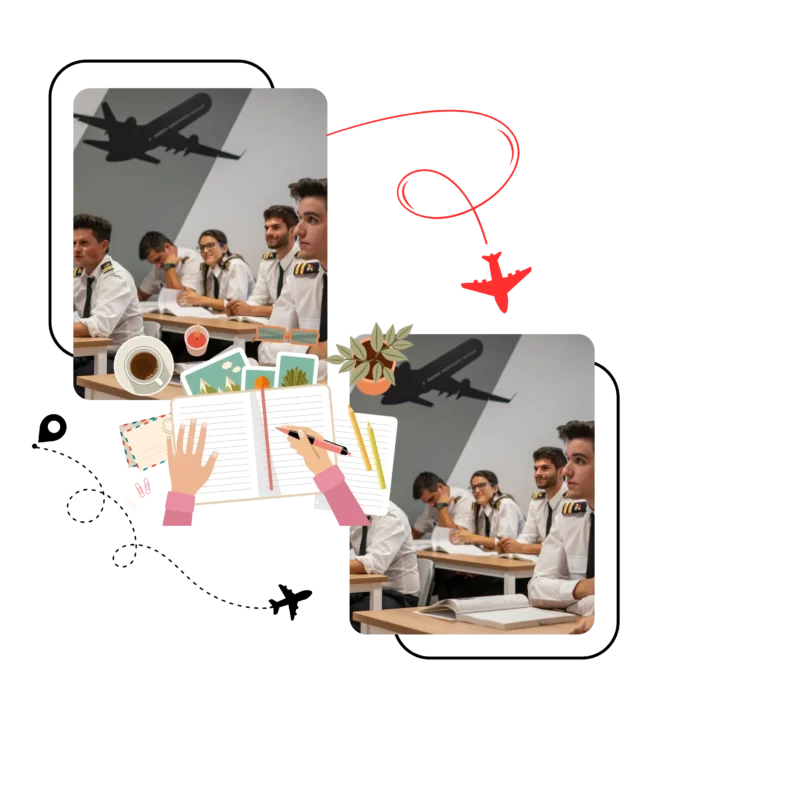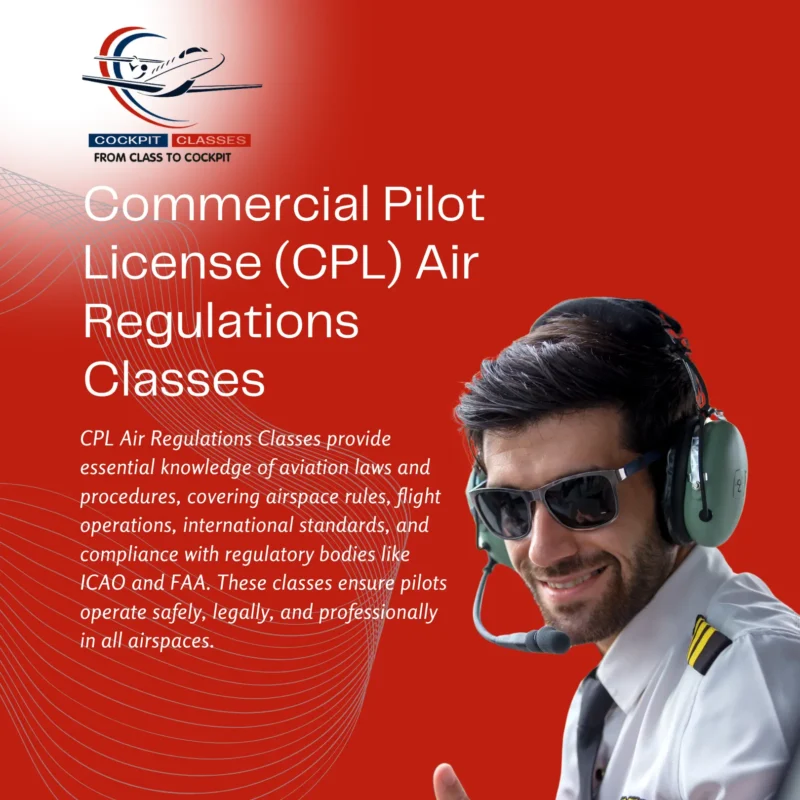Commercial Pilot License
Commercial Pilot License (CPL) Air Regulations Classes
DGCA Certified – Chief Ground Instructor

Commercial Pilot License (CPL) Air Regulations Classes
Commercial Pilot License (CPL) Air Regulations Classes, as defined by the Directorate General of Civil Aviation (DGCA) in India, are government-enforced rules to ensure the safety and airworthiness of aircraft.
The DGCA categorizes CPL Air Regulations Classes based on the maximum certified takeoff mass (MTOM) of aircraft:
- Less than 5700 kg MTOM
- More than 5700 kg MTOM
- More than 12,500 kg MTOM
Each category is further divided into subclasses based on aircraft type, such as single-engine, multi-engine, or helicopters.
To obtain a CPL, candidates must meet DGCA requirements, including passing DGCA exams, holding a valid medical certificate, and gaining experience on the specific aircraft type they intend to operate. Experience requirements increase with the aircraft class, with the highest category having the most stringent criteria.


Commercial Pilot License (CPL) Air Regulations Classes
CPL Air Regulations Classes are designed to provide aspiring commercial pilots with a comprehensive understanding of aviation laws, procedures, and regulatory frameworks that govern safe and legal flight operations. These classes are essential for pilots to navigate complex airspace, ensure compliance with aviation standards, and operate aircraft in accordance with national and international rules.
In India, the Directorate General of Civil Aviation (DGCA) sets the guidelines for CPL Air Regulations. The DGCA divides these regulations into categories based on the aircraft’s maximum certified takeoff mass (MTOM), with specific criteria for each category. These regulations ensure that pilots are trained to handle various aircraft types and comply with aviation standards for safe operations.
Key Components of CPL Air Regulations Classes
DGCA Classification of Aircraft
- Pass DGCA Exams: Candidates must successfully pass written and practical exams covering aviation laws, regulations, air navigation, and flight operations.
- Medical Certificate: A valid Class 1 Medical Certificate is required to ensure pilots meet health standards for commercial flying.
- Flight Experience: Pilots must accumulate a minimum number of flying hours, depending on the aircraft class and sub-class. The experience requirements vary, with more stringent requirements for heavier aircraft and multi-engine operations.
Aviation Laws and Airspace Regulations
CPL Air Regulations classes provide in-depth knowledge of airspace classifications, flight restrictions, and international aviation laws:- Airspace Classification: Understanding different types of airspace (controlled, uncontrolled, restricted, etc.) and the rules that apply to each.
- Flight Rules: Learning the rules for visual flight (VFR) and instrument flight (IFR), including communication protocols with air traffic control.
- Air Traffic Management: Procedures for filing flight plans, obtaining clearances, and coordinating with air traffic services during flights.
Safety and Compliance
These classes emphasize the importance of maintaining compliance with aviation safety regulations, including:- Pre-flight inspections and aircraft airworthiness standards.
- Flight crew duty times and restrictions to prevent fatigue.
- Emergency protocols and procedures to follow in case of incidents or accidents.
Training Structure
Theoretical Instruction
Classroom sessions focus on understanding air regulations, aviation law, and safety protocols. Theoretical instruction covers subjects such as:- Air navigation and flight planning.
- Meteorology and its effects on flight operations.
- International aviation rules, including ICAO standards.
Practical Training
Practical flight training is crucial in helping students understand how regulations apply in real-world flying conditions. Students learn to:- Comply with air traffic control instructions and airspace management.
- Implement emergency protocols and standard operating procedures.
- Perform various flight maneuvers while adhering to safety guidelines.
Certification Outcome
Upon successful completion of CPL Air Regulations classes and meeting all requirements, pilots receive certification that qualifies them to fly commercial aircraft within the framework of DGCA regulations. The certification ensures that pilots:
- Understand and follow the applicable airspace, flight, and safety regulations.
- Can operate aircraft safely and in compliance with legal requirements.
- Are prepared to handle different aviation scenarios within the context of national and international law.
Course Duration
CPL Air Regulations classes typically last several weeks to a few months, depending on the institution and training schedule. The duration depends on the depth of the subject matter and the amount of practical training required.
Conclusion
CPL Air Regulations classes are an essential part of pilot training, ensuring that commercial pilots are well-versed in the rules and regulations that govern aviation. These classes cover a broad range of topics, from airspace management and flight rules to international laws and safety protocols, preparing pilots to navigate the skies safely and professionally. Mastery of these regulations is crucial for any aspiring commercial pilot looking to operate aircraft in compliance with industry standards.

